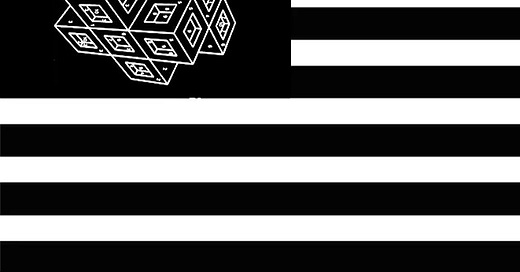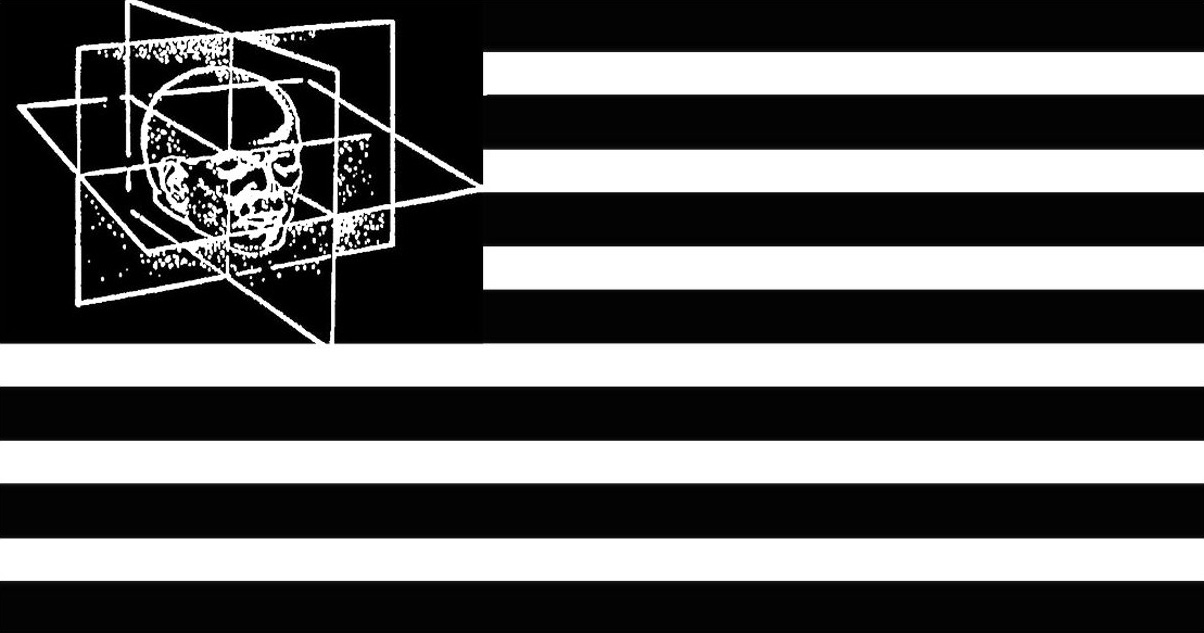I The Stage
Imagine the stage of a theatre. Within the confines of the stage, the various props are transformed into complete objects: a styrofoam cutout becomes an actual stone, a wooden frame becomes the walls of a house.
From the point of view of the interiority of the stage, those things indeed become houses and stones, but only through the wholeness of the play and its territory of the stage. Outside of said territory, looking in, one understands the play as a wholeness that governs all discourses, events, and scenarios on the stage.
The play could be imagined within the confines of its interiority, an eschatological entity driving its imagined world to its ultimate end. A telic pylon.
The theater goer’s purpose is to encounter said wholeness —understand it completely as an “end”— and diffuse it (diffuse it through the recognition that it is a “play” and the play’s domain of reality exists only within the confines of the stage, which is provided by some other, greater domain).
Similarly, how the interiority of the play produces a world through the stage, the various parts of that world will consist solely of the “gene” of the stage. The stone ceases to be a composite of minerals; its “organs” are replaced by styrofoam, which reflects the “DNA” of the stage. Again, if one were to exist “inside” the territory of the stage, then that reality, of course, is taken for granted. Similarly, all the events that unfold within the stage, from the interior, can seem contradictory, but to the audience, it’s one continuous and unfolding whole that supervenes on all contradictions.
In the movie Tron: Legacy, the same scenario lays itself out, but the analogy of the stage and the play is extended by a dimension: the advancement of computation paves the way to “the future”. In the film, that future is already present as a reality within the interior of the computer. The future world that the technology brings is already inside the technology in a literal sense.
Extending the analogy of the play comes “the grid”. The grid realizes the same through the simulation of the computer, which here is the parallel to “the stage”. It’s its own interior universe, and everything is derived from its completeness. People of the grid similarly have their insides made out of bits reflecting the “DNA” of the computer. When the user enters and he bleeds, suddenly there is a confrontation between the two universes, not unlike the confrontation between large cosmologies in history. However, that scenario swiftly changes when one realizes that the grid is actually the future scenario of the exterior. In that sense, immediately the exterior loses being the “greater domain” and is called into question —similarly, how the various domains and institutions of modernity are called into question by cybernetic technology and the internet. Yet at the same time, the apotheosis of modernity is within the perfection of global cybernetic technology.
All of this analogizes a future and yet present scenario: the future is ruled by the domain that can replicate its “DNA” into a universe on its own, from which everything is derived. The domain of the future becomes the domain of “the stage” already present.
II The Image
The medium that can depict “wholeness” is that of the image. The image presents all parts, contradictory or not, as an immediacy. When one starts to think about or talk about an image, one produces a linearity from this immediate wholeness, not unlike the linearity of the scenes within a play. It’s important to emphasize that the resulting linearity will always refer back to the image, the wholeness that produced it. It will always exist within the image’s domain; its universe.
In fact, that formula can be reversed and is reversed by the call of the future that is present: each linearity must refer back to an image, each word uttered, each event, and every scenario. It all must take place within a (universal) image. (Ultimately, of course, this necessarily must be the Image of God.)
The relations of the stage and the play and the grid and the computer represent the formula “the medium is the message”, i.e., a point where the aggregate conditions that allow the operation of something is indistinguishable from that something’s operation. The stage sets the domain of the play, and yet the stage is one amongst the many things that the play “brings to life”.
More interestingly, in Tron, the scenario is the following: the computer is the domain of the grid, and indeed, is also the product of the grid itself, equal to the world of the grid. This is where it’s revealed that the computer in the “external world” is already the presence of the grid itself, making the computer a retrocausal anomaly downstream from the future world of the grid housed within the computer itself.
The same scenario plays out between linearity and the image. All linearities lead up to an image in which they already exist. In modernity, thus, the future consists of finding the “right image” from which all linearities, that is, all lateral relations, can be derived. Of course, that future scenario is already present and active in the very existence of that idea. This is an act of eschatology, as the future that is present parallels with the double meaning of the word “end”.
Thus, we enter the domain of images isomorphic to reality, the symbolic language.
To this historical moment, the diabolic systems answer with the internet, which rapidly produces symbolic interpretations that are diffused immediately as they are equalized, whether outwardly or internally, with the so-to-speak “rational” processes of the internet: cables, satellites, and the structure of globalism. This way, it can incubate an image to answer the call of the future while also retaining and even enhancing the structures of global governance in the present.
In fact, this is why nothing happens: the structures of global governance and hegemony are the presence of the very image that the whole structure is for. But what is that image exactly? It is the very diffusion of all images into processes. It is every image but the one that would reveal the structures of diffusion.








Your language and use of analogy is more digestible than it's ever been in this one. Thank you very much for that. Have a happy and blessed soon to be Easter 🕊
Blessed Bright Saturday!